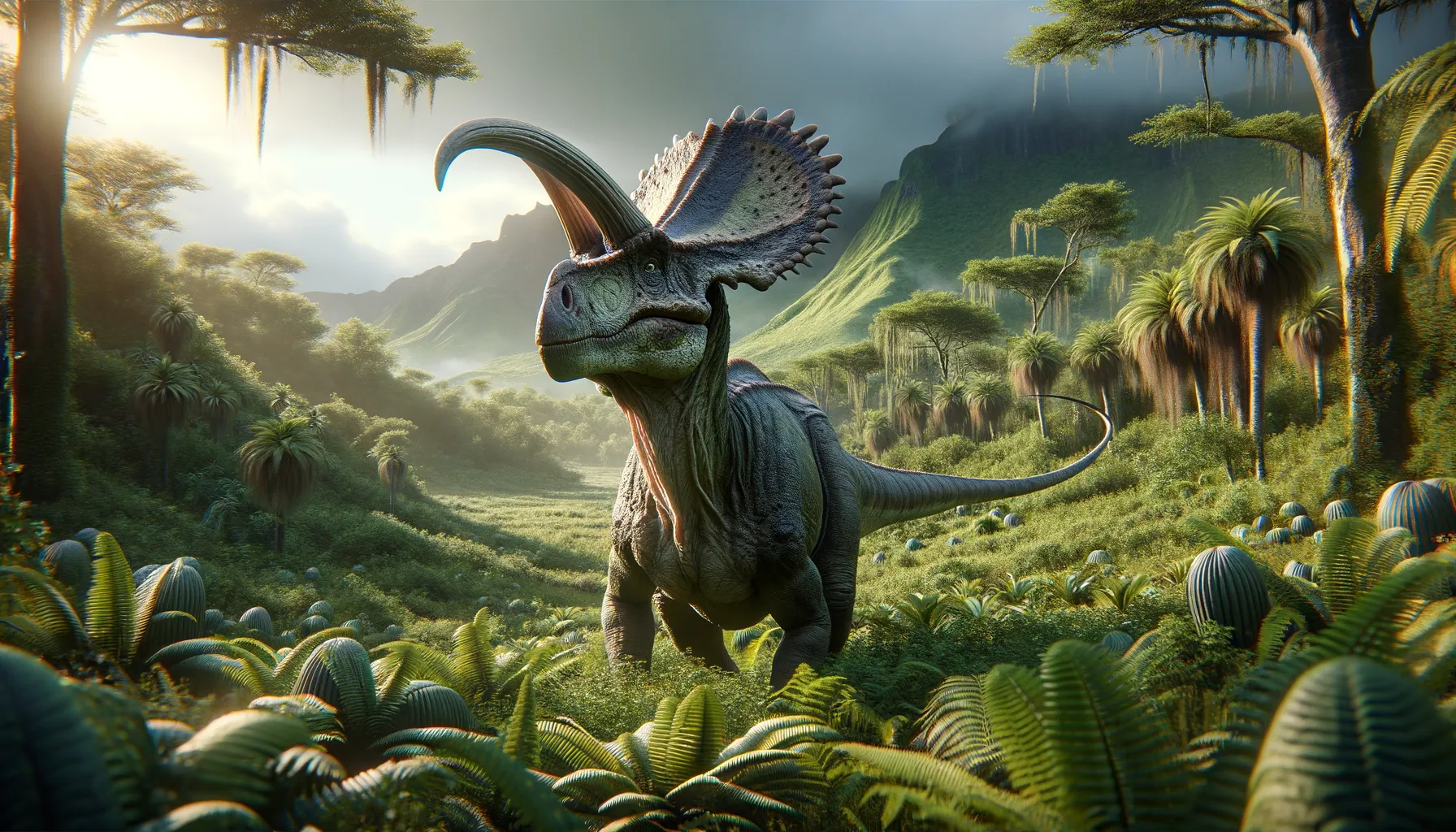
Achelousaurus
Knobbed legends of the Late Cretaceous plains.
Period
Cretaceous
Length
About 6 meters long.
Height
Around 2 meters at the shoulders.
Weight
About 4 tons as an adult.
Achelousaurus was a horned dinosaur known for its distinctive bony knobs and short frill. It lived during the Late Cretaceous period in what is now North America. Its beak-like mouth was well-suited for cropping plants and it likely frequented lush, verdant areas. Though related to famous ceratopsians like Triceratops, Achelousaurus stood out with its unique facial structure, lacking the long horns of its relatives.
Diet
Achelousaurus was a herbivore, primarily feeding on plants. It had a strong beak for cutting through tough vegetation, favoring low-lying shrubs and ferns.
Hunting
As a herbivore, Achelousaurus did not hunt. Instead, it foraged for plants, using its beak to strip leaves and its hefty body to deter predators.
Environmental challenges
Living in the Late Cretaceous, Achelousaurus contended with a dynamic environment, marked by volcanic activity and shifting climate. Predators like the fierce tyrannosaurids posed constant threats. It had to adapt to changes in available vegetation due to seasonal shifts.
Speed
Relatively slow-moving, estimated at walking pace.
Lifespan
Lived for about 20 to 30 years.
First discovery
Found in the Two Medicine Formation, Montana, 1995.
Fun Facts
- Achelousaurus was a ceratopsian dinosaur that lived about 74 million years ago during the Late Cretaceous period.
- It had a distinctive bony lump on its nose and two additional lumps over its eyes, unlike its horned relatives like Triceratops.
- The name 'Achelousaurus' means 'Achelous lizard,' named after the Greek river deity Achelous, reflecting its unusual appearance.
- Fossils of Achelousaurus have been found in the Two Medicine Formation in Montana, indicating it lived in a lush environment with rivers and forests.
- Achelousaurus belonged to a group of dinosaurs known as centrosaurines, which were herbivores that likely dined on the lush, tropical plants of their time.
- It's believed the unusual horns and lumps of Achelousaurus may have been used for display during mating rituals or as defense mechanisms.
- The first Achelousaurus fossil was discovered by famous paleontologist Jack Horner, who also served as an advisor for the Jurassic Park films.
Growth and Development
Achelousaurus grew rapidly in its early years, similar to other ceratopsians. Juveniles had less developed crests and knobs, which became more pronounced as they matured. Growth rates likely varied based on environmental factors and food availability.
Habitat
Achelousaurus inhabited lush floodplains and forested areas. This region offered ample vegetation and water sources, ideal for a large herbivore. Seasonal changes would have influenced food availability, prompting migrations.
Interaction with other species
Achelousaurus coexisted with various herbivorous dinosaurs, competing for plant resources. It likely traveled in herds for protection against predators. Its distinctive appearance may have played a role in intraspecies recognition or social behavior.
Natural lifespan
Survived up to 30 years under optimal conditions.
Reproduction
Achelousaurus would have laid eggs, typical of dinosaurs from this era. Nesting sites were likely communal, with females potentially sharing child-rearing duties. Hatchlings were vulnerable, requiring protection from predators.
Social behaviour
Achelousaurus probably lived in herds, a common behavior for ceratopsians. Herding offered protection through numbers against predators. Social interactions might have included displays using their crests and vocalizations.
Fossil locations
Fossils of Achelousaurus have been predominantly found in the Two Medicine Formation in Montana. This area is rich in ceratopsian fossils, providing insights into their ecosystems. Its discovery in the 1990s added depth to our understanding of ceratopsian diversity.
